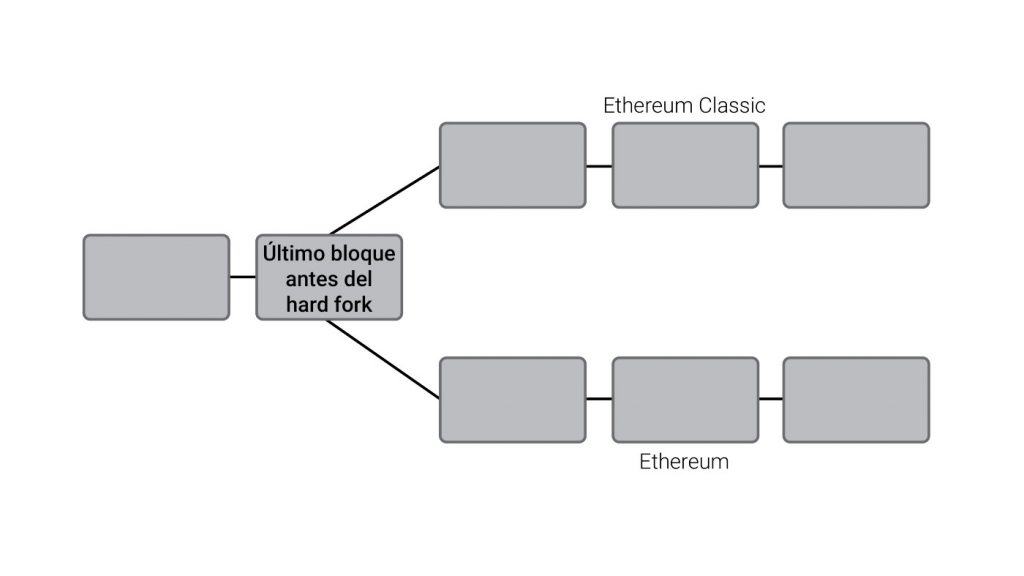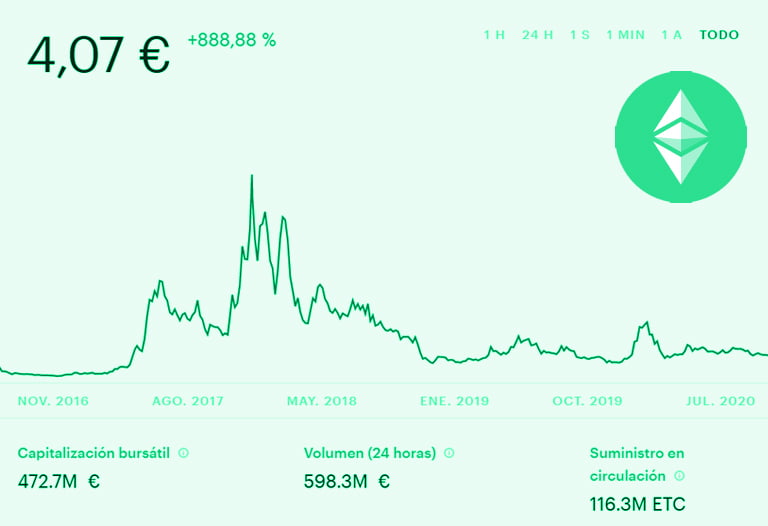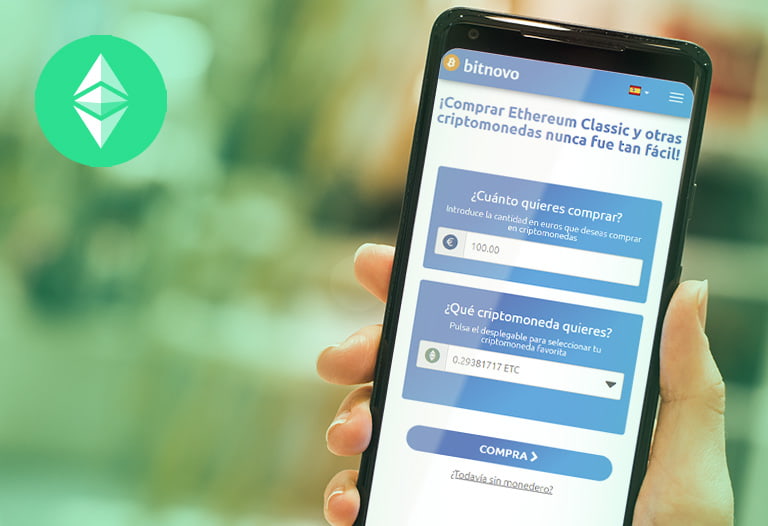
Table of Contents
ToggleYou may have heard of Ethereum but have you heard of the Ethereum Classic? According to its creators it is an improved version of the Ethereum network where transactions can be carried out in a decentralized way and it is also a collaborative network where any user can contribute.
Ethereum classic (ETC) arises from a hard fork where the Ethereum blockchain splits in two after an attack during 2016. On the one hand, the blockchain remains unchanged and, on the other, the blockchain returns the funds lost in the attack to its investors.
Although both projects sought to become a decentralized platform, they followed different paths. Ethereum Classic decided to create its own technology through community work, although part of that development is inherited from Ethereum.
History of Ethereum Classic
The beginning of this project took place in June 2016, following the hacking of the Ethereum platform where a total of 3.6 million ether were stolen. Being a fork (division) of Ethereum its original developers would be Vitalik Buterin and Gavin Wood.
The famous theft that paralyzed the entire crypto community, begins with the project The DAO (Decentralized Autonomous Organization), which was implemented as a smart contract in the blockchain of Ethereum. The DAO was the largest crowdfunding event in the history of cryptos and raised 11.5 million Ethers (about $150 million at the time).
But all this excitement would soon be overshadowed, as certain developers began to notice certain vulnerabilities in The DAO, which exposed the intelligent contract to token theft.
Unfortunately, the warnings were rejected by a large part of the community and this would have consequences.
One person or group of people (their identity is still unknown) was aware of the error and had begun to exploit it for their own benefit.
Thus, he withdrew increasing amounts of cryptos, without the need for the permission of others, until he accumulated the equivalent of 50 million dollars.
The fork
Due to this serious situation, the Ethereum community had to make a decision and after several weeks of discussion the decision was made to perform a hard fork in the Ethereum blockchain.
The choice was not easy and opinions were divided:
On one side were the supporters of the fork, saying it would be morally wrong to let the attacker take the funds and keep the money. On the other side were the anti-forks who argued that “the code is law” and that the DAO should not change under any circumstances, even if the attacker keeps the money.
This hard fork proposal was voted on and approved by 89% of Ether’s holders and on July 20, 2016, the funds returned to investors.
The goal was to return everything to the starting point. That is, to dismantle the DAO and return the funds.
Due to the hard fork the chain was divided in 2 and a new blockchain was created:
The new blockchain (with the recorded theft and returned funds) continued to retain the name Ethereum, under the tutelage of Vitalik Buterin and the original blockchain where the funds were stolen ended up receiving the name Ethereum Classic.

The division in the Ethereum chain resulted in two new paths: Ethereum and Ethereum Classic.
Maybe now you understand why in the panel to buy crypto currencies in Bitnovo you can choose to buy Ethereum (ETH) or buy Ethereum Classic (ETC).
How does ETC work?
Ethereum classic works under the objective of maintaining a stable development system capable of handling decentralized commercial applications. This system is based on technological decentralization and the creation of programs supported by some digital value.
ETC allows complex intelligent contracts to operate autonomously and cannot be modified or censored. The project is based on the Ethereum blockchain and therefore respects the same laws as the original chain. Through the use of intelligent contracts, the network allows the design, testing and deployment of technological applications of all types and completely decentralizes them thanks to its native blockchain.
Ethereum Classic offers an infrastructure that facilitates the creation of such programs and meets all the characteristics of a functional programming language.
The operation of the platform follows key rules such as immutability above all things so that valid transactions can never be erased or forgotten. The users of the platform are governed by the phrase “The code is the law” so they ensure and guarantee that the rules will always be respected and will not be changed.
Another rule of the platform is the respect for decentralized governance. This is because the community defends the fact that decentralization will avoid cases of corruption and irresponsibility, thus guaranteeing the life of the project. The community does not admit the intervention of third parties, since decisions are made by the community in consensus and for the benefit of the community.
How do you mine Ethereum Classic?
The mining of this digital currency is not very different from that of ether. Both currencies are obtained through the Proof of Work (POW) consensus protocol. However, unlike Ethereum, Ethereum Classic has no plans to become a Proof of Work (PoS) mining algorithm, although several Ethereum Classic developers continue to work on future improvements.
Last March the reward for block mining was increased from 4 Ethers classic to 3.2 with the aim of slowing down token inflation and making it increasingly scarce. The currency can be mined by both CPU and ASIC miners.
The ETC block reward decreases for every 15,000,000 blocks mined, the reward will decrease in approximately April 2022, where the reward will decrease from 3.2 ETC to 2.56 ETC per block.
Price of ETC
The Ether Classic or ETC is the digital currency behind the ethereum classic blockchain. The maximum issue of this coin is 230 million unlike the Ethereum which is infinite. There are currently 116,313,299 ETC in circulation
At the beginning, for the year 2017, the currency managed to remain stable, reaching $24 in June. After the rise, its value continued to increase until it reached $40 in January 2018 the price of each ETC experienced a decline when most developers and miners switched to the newly bifurcated Ethereum until it reached its current price of between $4.7 and $5.

ETC Wallets
When storing FTE you will need a wallet or purse. Not just any wallet will do to store the Ethers Classic, so here are some that may help you.
The options are not few, since there are many possibilities to choose from, these options offer a different balance between the security of your cryptomonkets and the convenience.
Web wallets are a good option that allow you to enter your wallet from a web page anywhere. Although they are not recommended for large quantities, they allow you to interact with ETC. Some examples are MyCrypto and MyEtherWallet.
The hardware wallets will help you to store crypto currencies in the long term. Examples are HTC Exodus and Trezor.
Ethereum Classic vs Ethereum
As we know, both platforms are very similar but at the same time completely different. Let’s see some of their differences:
- While the emission limit for Ethereum Classic crypt coins is 230 million, Ethereum has no emission limit.
- The Ethereum mining reward is 2 Ether per block, however the Ethereum Classic platform offers miners a reward of 3.2 ETC per mined block.
- Ethereum classic remains faithful to the policy of immutability while Ethereum is not.
In Ethereum some third parties have intervened in the decision making of the community while in Ethereum Classic no third parties are admitted, since the decisions are made by the community for its own benefit.

Where to buy Ethereum Classic?
If you want to buy ETC easy and fast we obviously recommend buying Ethereum Classic from Bitnovo. Besides being in the Bitnovo blog we recommend this option because of the facilities we offer and the efficiency of management.

Our main objective is to make it easy for any user starting out in the crypto world to purchase any crypto currency as quickly as possible without any problems or interventions.







